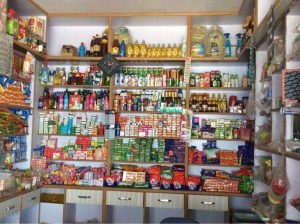 Prof. Raj Kishore Panda in Bhubaneswar, December 8, 2023: Recently the Kiranas were in the news because of the slowdown in the sale of fast moving consumer goods (FMCGs) in the country. Since these traditional retail stores over 13 million accounts for 90 percent sale of food and groceries and nearly the equal percentage in the sale of FMCG products in the country, the deceleration in the sale of these stores has raised concern among the executives of some of the leading FMCGs companies.
Prof. Raj Kishore Panda in Bhubaneswar, December 8, 2023: Recently the Kiranas were in the news because of the slowdown in the sale of fast moving consumer goods (FMCGs) in the country. Since these traditional retail stores over 13 million accounts for 90 percent sale of food and groceries and nearly the equal percentage in the sale of FMCG products in the country, the deceleration in the sale of these stores has raised concern among the executives of some of the leading FMCGs companies.
It is to be stated that the decline in the sale of the Kirana stores as a whole is not something that has happened all of a sudden. This trend has been experienced over the last two decades with the gradual rise in the organized retailing in the form of supermarkets and e-commerce in the country. The Kiranas have been gradually losing their customer base and their share in the retail market has started declining.
Operating in the informal sector the Kiranas play a pivotal role in the Indian retail trade sector and contribute creditably to the growth of the economy. While their contribution to India’s GDP comes to about 11 percent, these retailers employ 40 million workforce accounting 8 percent of the total workforce of the country. More importantly, the Indian economy being largely a consumption-driven economy heavily leaning towards essentials with food and groceries accounting 50 percent of our retail intake these Kiranas have served their customers over time as relationship-retails.
Dwelling on the basic characteristics of Kirana stores we may state that these are largely independent family-run shops and operate in a highly disaggregated manner at the local levels. Situated in the nook and corner of the streets in different towns and semi-urban localities and in the remotest rural areas these stores are found selling numerous items (both grocery and non-grocery products including some services) of the everyday need.
Being small in size these shops operate on a lower profit margin. As some empirical evidences reveal the average Kiranas’ profit margin varies from 5 percent to 20 percent. Even in case of independent stores it is within 1-4 percent only. The special feature of these stores lies in their familiarity with the people residing in the locality including their preferences and purchasing behaviour. And this local familiarity often leads to catering to their neighbours’ requirements on credit basis. As studies have reported, these stores work as informal credit sources for the rural people by providing easy and cheap credit.
Working over the years the Kiranas have stood the test of the time. Besides being credited with their valuable insight on local preference, customized service and strong inter-personal relationship with their customers, their role was well acknowledged during lockdown in the covid-19 pandemic period. During the lockdown these stores acted as multi-utility points in providing large variety goods and services other than groceries while the supermarkets and modern retail stores remained closed due to supply chain disruptions.
 Keeping with the country’s growing affluence and people’s change in shopping choices these Kirana retailers have developed remarkable resilience in their business acumen. Their business is no more confined to the brick -and – mortar stores. They are now taking orders on phone, providing home delivery benefits to the customers. These stores are now working like multi-utility points offering a large variety of services such as banking, insurance, digital payments, PAN card services etc, to the customers.
Keeping with the country’s growing affluence and people’s change in shopping choices these Kirana retailers have developed remarkable resilience in their business acumen. Their business is no more confined to the brick -and – mortar stores. They are now taking orders on phone, providing home delivery benefits to the customers. These stores are now working like multi-utility points offering a large variety of services such as banking, insurance, digital payments, PAN card services etc, to the customers.
However these age-old retail stores are now encountering two types of challenges. Along with external challenges which come from competition with corporate biggies and e-commerce companies, these retail stores have some inherent weaknesses which need to be addressed on a priority basis. These stores lack ability in managing the stocks – balancing supply and demand.
Very often overstocking leads to cash tied up in unsold inventory while under-stocking results in dissatisfaction among customers. Being independent family run stores they are not adequately trained to follow standard procedure to run the business. The consumption demand in rural and semi-urban markets remains under-served. They need to be trained to adopt new methods of retailing – physical as well as digital.
To conclude it may be said the Kiranas have the potential to grow. Contrary to the whispers that with the growth of organized retailing these stores will soon be history is not found true. But these stores need to be modernized to cater to the consumers’ preferences. This will certainly have a positive impact on higher growth and employment in the Indian economy. The Prime Minister’s slogan “Vocal for Local” can be realised to a great extent.


Leave a Reply
Be the First to Comment!